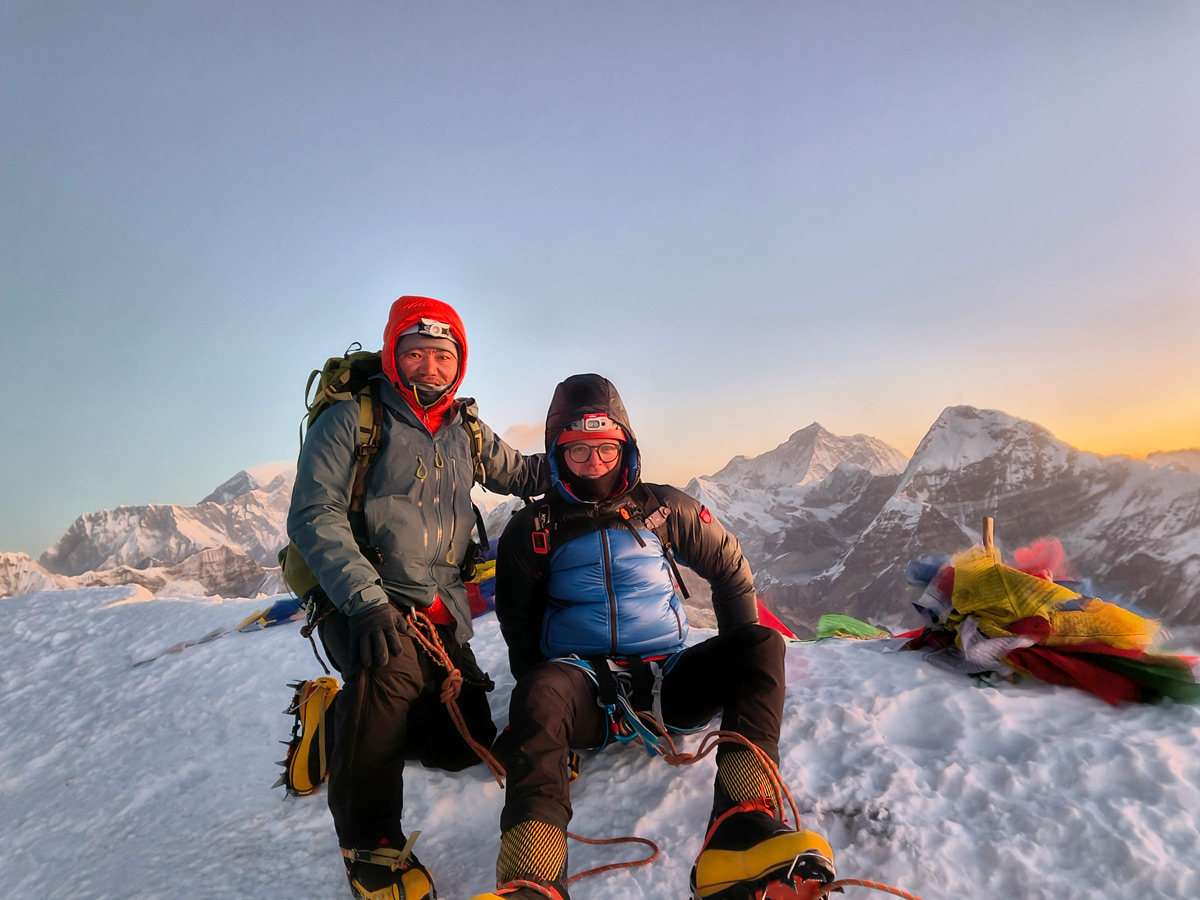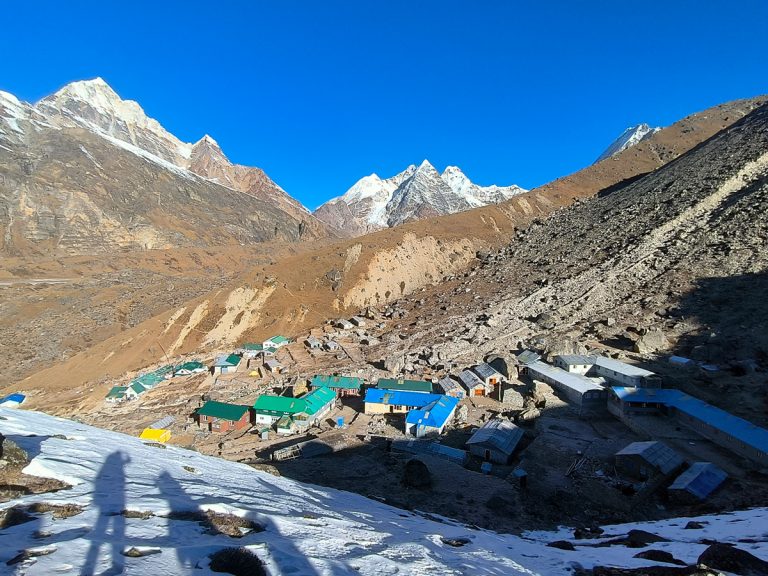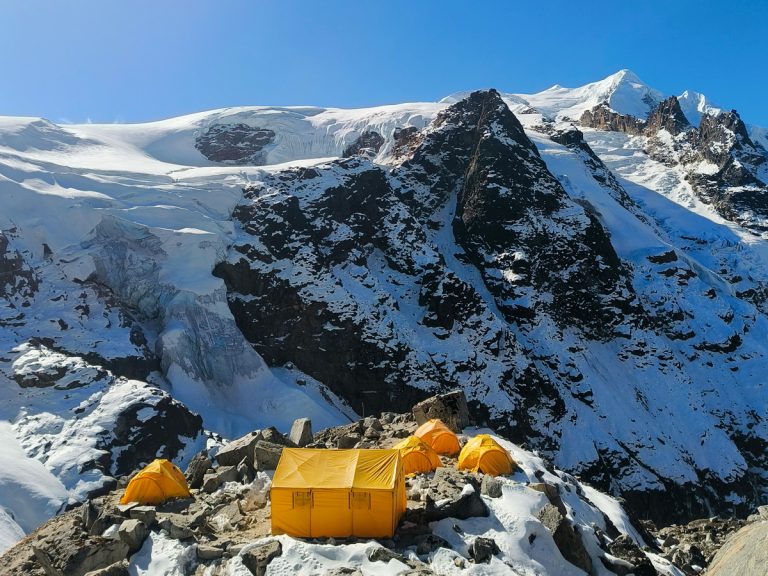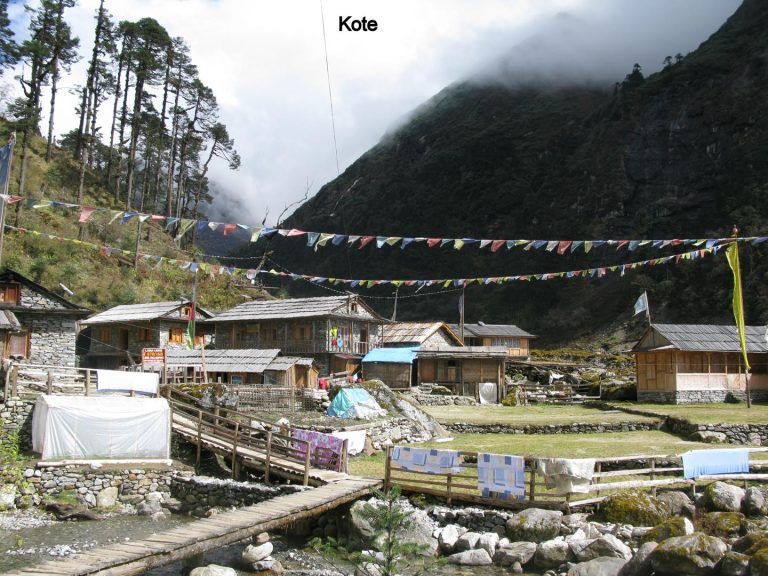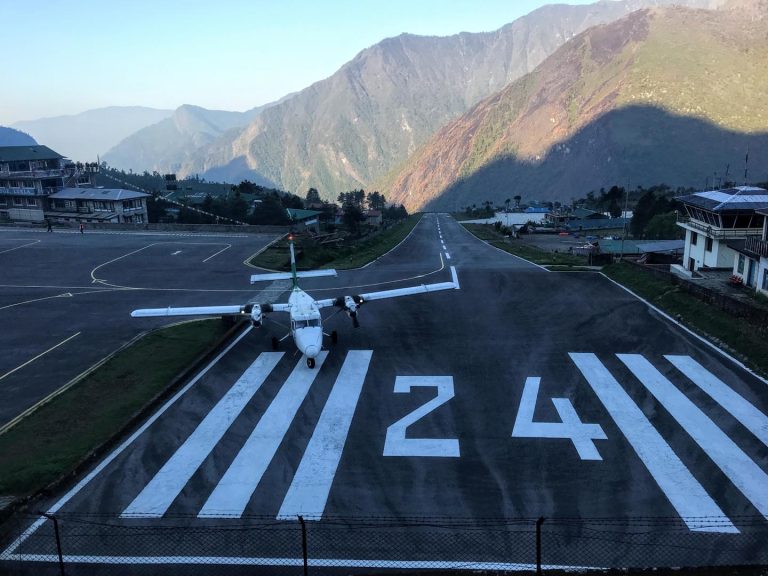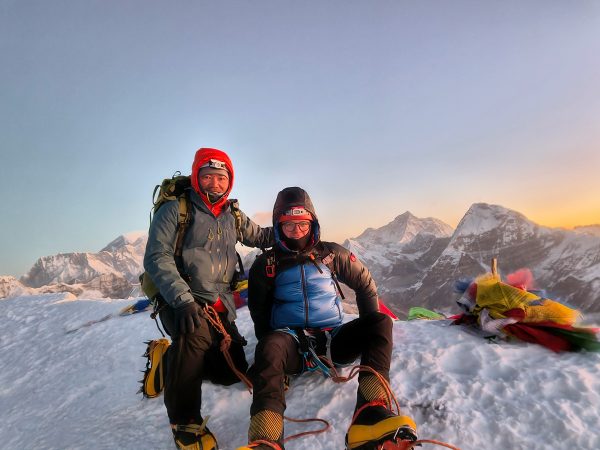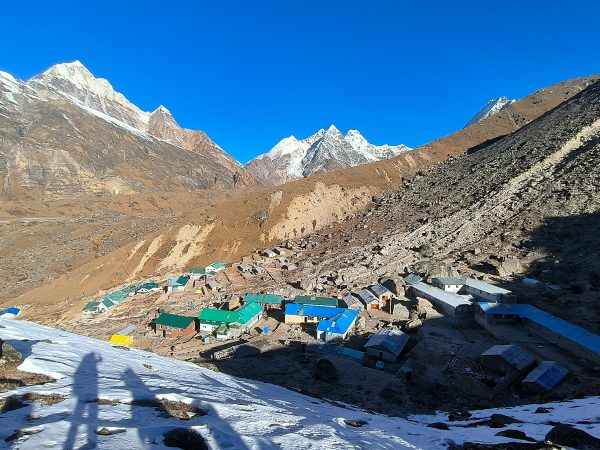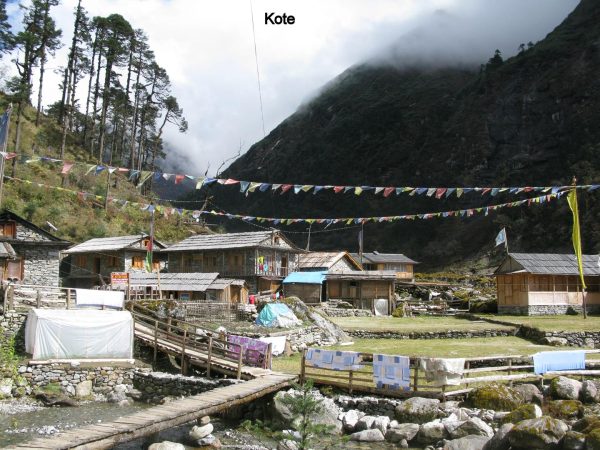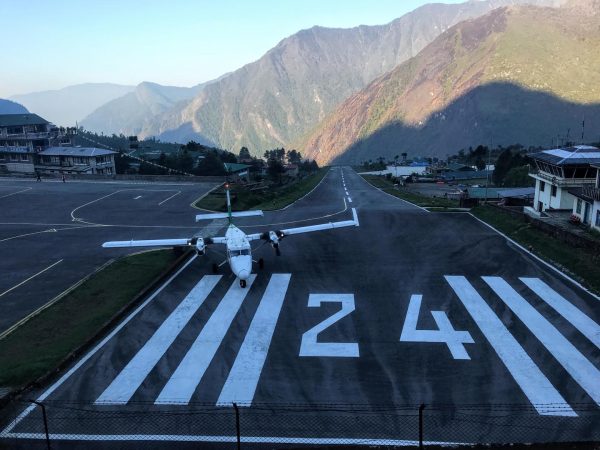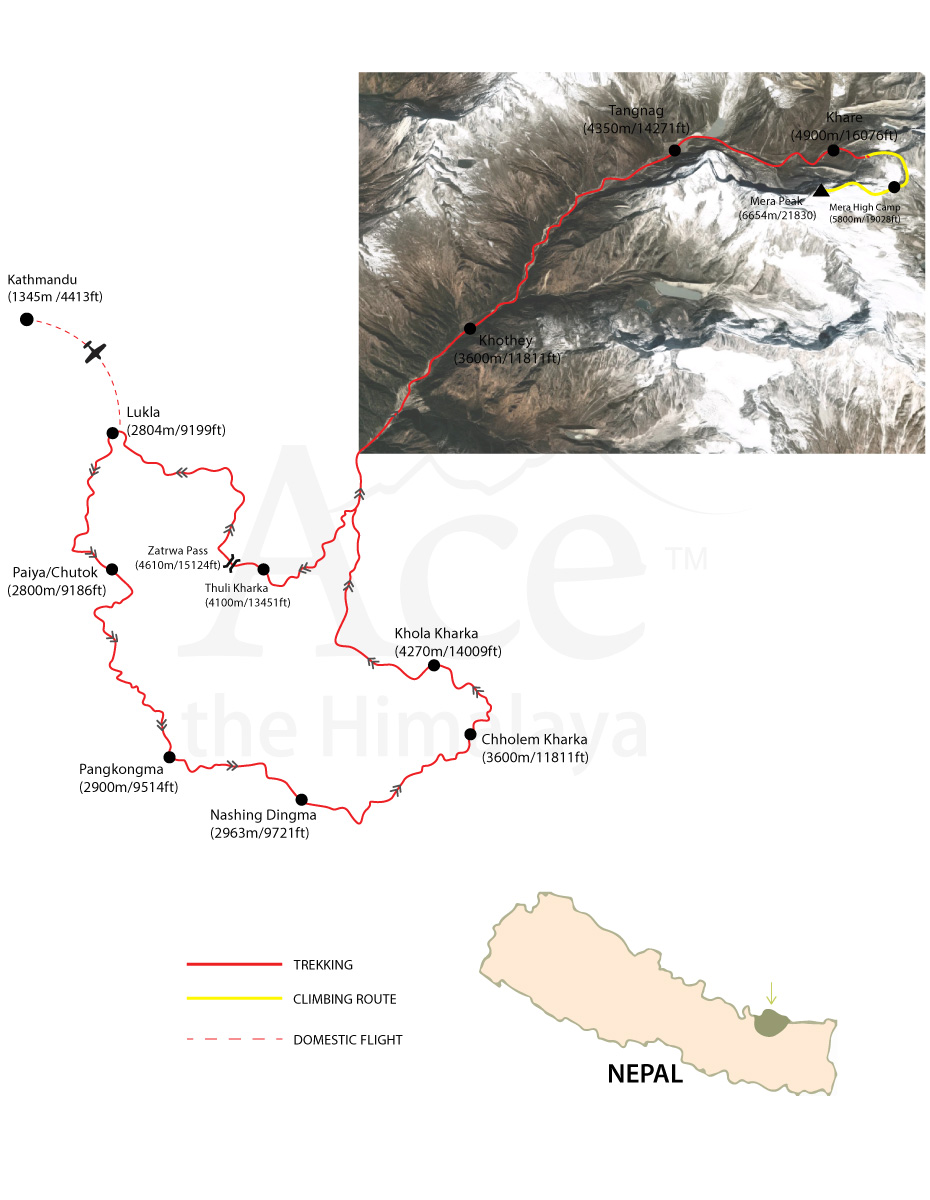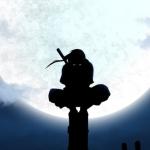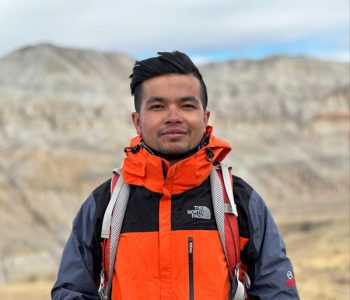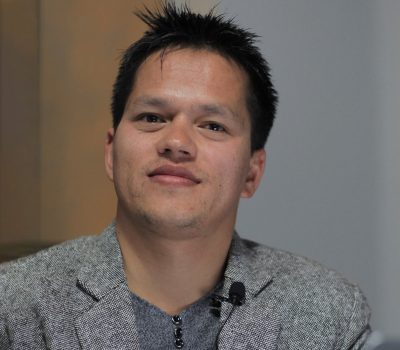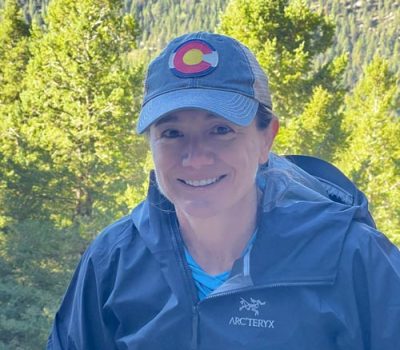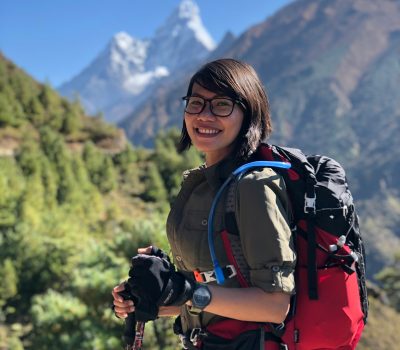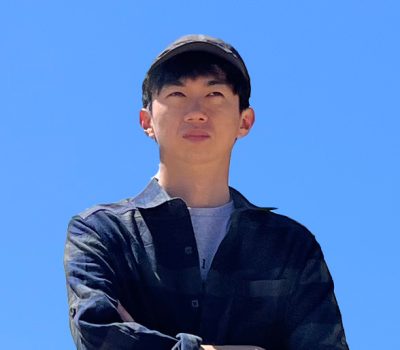Mera Peak Climbing - 19 Days
| No. of people | Price per person |
|---|---|
| 1 Pax | USD 3,350 |
| 2 - 3 Pax | USD 2,830 |
| 4 - 6 Pax | USD 2,660 |
| 7 - 10 Pax | USD 2,625 |
| 11+ Pax | USD 2,600 |
Mera Peak is the highest trekking peak in Nepal. It is situated on the edge of the famous Khumbu Region, which is dominated by Mount Everest.
Trip Highlights
- Scenic flight to and from Lukla.
- Step inside and experience life as the “mountain people” live in the heart of the Himalayas.
- Remarkable views of Kangchenjunga, Makalu, Everest, Nuptse, Lhotse, Ama Dablam, Cho Oyu, and many other mountains.
- Wonderful staying Experience in remote regions.
- Summit to the highest trekking peak, Mera peak at an elevation of 6,470 m/21,227 ft.
Trip Overview
Nestled within Nepal’s celebrated Khumbu Region, Mera Peak Climbing stands as the loftiest trekking summit. Mera Peak resides within the Mahalangur range at an altiude of 6,470 meters.
Although very high, Mera Peak is a straight forward climb and is frequently ascended by groups and an individual whose only climbing qualifications are that they are fit and have an outgoing sense of adventure.
The trek takes us south from the airstrip at Lukla, trekking through beautiful forested hillsides and over several passes before climbing up to the Mera La. After the climb, we descend directly to Lukla.
The Mera Peak Climbing is a high-altitude trek and climb. Participants need to be fit and conversant with the use of an ice axe and crampons. Instruction in the use of these will be given at our base camp near the Mera La if required. In good conditions, it is possible for a fit party to reach the summit and return to Khare in one day.
This is a rewarding experience as it provides glorious views of Nepal and a vista that takes in Kangchenjunga and Makalu to the east and Everest appearing over the massive southern aspect of Nuptse and Lhotse to the north. To the west stands the spires of Ama Dablam and Kang Taiga and in the distance is the mighty bastion of Cho Oyu. This is a fine panorama of many of the world’s highest peaks.
The climb itself takes the north face glacier in a steady rise to the summit ridge which leads, in an exposed and exciting situation, to the top. After the mountain has been climbed, we return by a direct route across a dramatic ridge to Lukla and the flight to Kathmandu.
The weather in the Himalayas is unpredictable. It can change within a few hours which is why a spare day has been added keeping the fact in mind. In case of bad weather on the day of the summit, you can climb the summit the following day.
Otherwise, if the weather remains good and works in the favor, then the spare day can be utilized to rest or to relax anywhere on the trail or at Lukla which offers a lot of good restaurants, bars, bakeries, etc. Lukla has many good places to hang out. All the trekkers and climbers celebrate the success and end of their trip to Lukla.
Short Itinerary
Arrival in Kathmandu Airport (1,400 m/4,593 ft). Overnight at a Hotel.
Fly to Lukla (2,840 m) from Kathmandu – 35 minutes or drive to Manthali/Ramechhap (474 m) by shared tourist vehicle – 5 to 6 hours and a 20 minutes flight to Lukla, and then trek to Paiya/Chutok (2,800 m) – 3 to 4 hours. Overnight at a Guesthouse.
Trek to Pangkongma (2,900 m/9,514 ft) – 6 to 7 hours. Overnight at a Guesthouse.
Trek to Nashing Dingma (2,963 m/9,721 ft) – 6 to 7 hours. Overnight at a Guesthouse.
Trek to Chholem Kharka (3,600 m/11,811 ft) – 6 to 7 hours. Overnight at a Guesthouse.
Trek to Khola Kharka (4,270 m/14,009 ft) – 6 to 7 hours. Overnight at a Guesthouse.
Trek to Kothe (3,600 m/11,811 ft) – 6 to 7 hours. Overnight at a Guesthouse.
Trek to Tangnag (4,350 m/14,271 ft) – 6 to 7 hours. Overnight at a Guesthouse.
Acclimatization and Rest Day at Tangnag. Overnight at a Guesthouse
Trek to Khare (4,900 m/16,076 ft) – 4 to 5 hours. Overnight at a Guesthouse.
Acclimatization Day & Practice at Khare. Overnight at a Guesthouse.
Trek to Mera High Camp (5,800 m/19,028 ft) – 7 to 8 hours. Overnight at a Tented Camp.
Summit Mera Peak (6,470 m/21,227 ft) and Return to Khare (4,900 m/16,076 ft) – 10 to 15 hours. Overnight at a Guesthouse.
Spare Day In Case of Bad Weather on Mera (If weather is good on the climbing day, you can use this spare day anywhere in the trek or at Lukla). Overnight at a Guesthouse.
Trek to Kothe (3,600 m/11,811 ft) – 6 to 7 hours. Overnight at a Guesthouse.
Trek to Thuli Kharka (4,200 m/13,779 ft) – 6 to 7 hours. Overnight at a Guesthouse.
Trek to Lukla (2,840 m/9,317 ft) via Zatrwa La Pass (4,610 m/15,124 ft) – 7 to 8 hours. Overnight at a Guesthouse.
Fly back to Kathmandu – 35 minutes or Manthali/Ramechhap – 20 minutes from Lukla and same day drive to Kathmandu by shared tourist vehicle – 5 to 6 hours. Overnight at a Hotel.
Transfer to International Airport for final departure.
 Note
Note
Our standard itinerary might differ slightly due to unpredictable happenings and events out of our control. Factors such as flight cancellation/delay, unfavorable weather, natural calamities, newly implemented government rules, political affairs, trekkers’ health condition, etc., are possible. Evaluating the situation’s possible solutions allow the trekking to resume as much as possible based on the best alternatives. In these times, we look for your cooperation and flexibility.
Adding two spare days after your trek is strongly advised. Flights to and from Lukla are often delayed or canceled due to weather conditions, and these buffer days help avoid complications with your international travel plans. You also have options to customize this trip where you can add on a sightseeing tour in Kathmandu, other adventure sports or day trips around the country before or after the trek.
 Lukla flight information
Lukla flight information
We would like to inform you regarding the Lukla flight details which may affect your itinerary. During peak seasons, (including March, April, May, September, October and November) the flight to Lukla will be operated from Ramechhap/Manthali due to air traffic expansion in Kathmandu, which is about a 5 to 6-hour drive from Kathmandu. Whereas, during nonpeak seasons, (including January, February, June, July, August and December) the flight is operated from Kathmandu.
Please be aware that the decision regarding the operation of flights solely depends on the airline and is influenced by the volume of travelers during the specific month.
Unpleasant weather conditions, congested traffic in the Airport, unmanaged runway, topographical difficulties, etc., are the significant reasons for Lukla flight delay/cancellation. Therefore, if you intend on trekking in the land of Everest region, arranging additional one or two days in your trip is highly preferable. This will help in case of flight delay/cancellation and thus board on the pre-planned international flight.
Departures & Availability
Our groups are small with maximum 14 people. We create groups of independent travelers, friends and families which maintains close interpersonal connection, engage more and get into depth of the journey. Choose a date from the calendar to reserve your spot.
| No. of people | Price per person |
|---|---|
| 1 Pax | USD 3,350 |
| 2 - 3 Pax | USD 2,830 |
| 4 - 6 Pax | USD 2,660 |
| 7 - 10 Pax | USD 2,625 |
| 11+ Pax | USD 2,600 |
Our groups are small with maximum 14 people. We create groups of independent travelers, friends and families which maintains close interpersonal connection, engage more and get into depth of the journey. Choose a date from the calendar to reserve your spot.
| No. of people | Price per person |
|---|---|
| 1 Pax | USD 3,350 |
| 2 - 3 Pax | USD 2,830 |
| 4 - 6 Pax | USD 2,660 |
| 7 - 10 Pax | USD 2,625 |
| 11+ Pax | USD 2,600 |
We do not have fixed group departure date for Mera Peak Climbing. This trip can only be organized upon your request. We offer discounts based on group size. For further information, please complete the form provided below.
Price Includes
Accommodation
- Twin-sharing/double accommodation in a 3-star hotel for 2 nights in Kathmandu including breakfast (Private room accommodation can be organized at an extra cost)
- Twin-sharing guesthouse accommodation during the trek for 15 nights in Mera region
- Tented camp accommodation and all meals during the 1/2-nights stay at the Mera Peak Base Camp (We will provide fully water/wind-proof twin-share tents, dining tents, kitchen gear, dining table, chairs, toilet tents, etc.)
Meals & Drinking Water
- All your standard meals during the trek (Breakfast, Lunch, and Dinner) including one hot drink and seasonal fruits
- A farewell dinner on the last night in Nepal
- Purified drinking water during the trek using water filter or water purification tablets
Transportation
- All (international and domestic) airport transfers on a tourist vehicle
- Round-trip airfare between Kathmandu/Manthali and Lukla
- Kathmandu – Manthali – Kathmandu transportation by shared tourist vehicle
Guide and Staff
- Experienced, first-aid trained, government licensed, English speaking, and locally recruited Ace the Himalaya’s trekking guide (2 guides for group size more than 7 people)
- Porters during the trek for carrying luggage (1 porter for every 2 clients)
- Climbing Sherpa from Khare to the summit of Mera Peak and back to Khare (We assign one climbing guide for a group of 2 clients. We increase the number of guides if we have 3 or more clients in one group.)
- Wages, accommodation, meals, gear, insurance, and medications for all staff
Permits
- Sagarmatha/Everest National Park Permit
- TIMS (Trekkers’ Information Management System) card
- Mera Peak Climbing Permit
Benefits and Takeaways
- 1 Ace the Himalaya’s duffel/kit bag, trekking map, sun hat, Buff (Neck Gaiter)
- Trip completion certificate
Equipment
- Group climbing equipment (Climbing rope, ice screw, snow bar and ice hammer)
Administrative & Taxes
- All administrative expenses and government taxes
Price Excludes
- Lunch and dinner in Kathmandu
- International flight fare and airport departure tax
- Nepal Entry Visa (Visa can be acquired easily after your arrival at Tribhuvan International Airport in Kathmandu with a fee of USD 30 for 15 days visa, USD 50 for 30 days visa and USD 125 for 90 days visa)
- Travel insurance along with high-altitude emergency evacuation coverage
- Any beverages including bottled and boiled water
- Tips to trekking staff, climbing Sherpa and driver
- Personal trekking gear and equipment
- Any expenses other than the Price Include section
Mera Peak Climbing Itinerary
Expand AllDay 01: Arrive in Kathmandu
One of our officials will greet you at the Tribhuvan International Airport, Kathmandu, upon your arrival. We will take you to the hotel in our private tourist vehicle. Pre-trip meeting at the office with our trekking guide in the afternoon.
Note: Either on Day 01 or Day 02 depending upon your arrival, there will be a pre-trip meeting. The meeting time will be informed to you by the receptionist at your hotel. During the meeting, we will introduce you to your trek leader/guide. Please seek this opportunity to ask questions about the trek. We will also supply you with our trek duffel bag and cap. For the meeting, please make sure you bring your passport, three copies of passport-size photos, and a readable copy of your travel insurance policy. We will ask you to sign a legally binding trip form as well as a non-liability disclaimer.
Day 02: Fly to Lukla from Kathmandu or Manthali (Ramechhap) and then trek to Paiya/Chutok
Manthali to Lukla Flight
The airport in Manthali, Ramechhap is about 4 to 5 hours away from Kathmandu. Wake up at 2:30 am and take an escorted shuttle to Manthali airport on a shared tourist vehicle. Board a 25-minute flight to Lukla. Manthali to Lukla flight is relevant during peak trekking months.
Kathmandu to Lukla Flight
Wake up at 5/6 am. Our staff will escort you to the airport’s domestic terminal in Kathmandu. Board a 35-minute flight to Lukla. Kathmandu to Lukla flight is relevant during the off-season of trekking.
 Helicopter Option
Helicopter Option
You have the option to book a direct helicopter flight from Kathmandu to Lukla for an extra charge of USD 550 per person. This price is quoted on a 5-people sharing basis. This is the best alternative to avoid the long drive to Manthali airport during peak season (March, April, May, October, and November).
Flight to Tenzing-Hillary Airport usually takes place early in the morning. We suggest you make all the sorting and packing the day before, so there is no rush on Day 2. Once we reach Lukla, we will take a rest for a while. We will meet our porters. They will make their load with your duffel bags and other things. We assign one porter to every two clients. We will then walk towards the south, away from the Everest trail. We will pass through farmlands, a forest, go down and up the mountain, cross a couple of streams and finally reach Paiya after 4 to 5 hours of walking from Lukla.
Day 03: Trek to Pangkongma
Today we have a 6 to 7 hours trek to Pangkongma from Paiya. We will start after having our breakfast. We will walk uphill through forests until Col Khari La Pass at 3,081 m/10,108 ft.
After this, we will gently go downhill all the way to the village of Bupsa at 2,300 m/7,545 ft. Then, the trail climbs moderately until we reach our destination Pangkongma. The village is almost at the top of the mountains.
Day 04: Trek to Nashing Dingma
Pangkongma isn’t at the top of the mountain, so we will first climb up the winding path to a mountain pass Pangkongma La at 3,170 m/10,400 ft.
We will be greeted with stunning views of the surrounding mountains including the stunning south face of Mera Peak. From here, it is a steep descent all the way down to the Hinku Khola.
The downhill walk will be on the ridge for a significant portion. After resting at the bottom of the valley for a while and crossing the suspension bridge, we will take a 2-hour climb up the forests to our destination Nashing Dingma.
Day 05: Trek to Chholem Kharka
Like Pangkongma, Nashing Dingma is below the top of the mountain, and our destination is on the other side of the mountain. We will start climbing up through the forest.
It’s a steep ascent until Surke La Pass at 3,060 m/10,039 ft The pass has a couple of lodges selling snacks and tea. We will rest for a while to regain our energy.
Then we will continue on to moderate uphill and downhill trek to Chholem Kharka which is basically a pastureland.
Day 06: Trek to Khola Kharka
It’s one of the challenging days of Mera Peak expedition, because for the large part of the hike, we will only be going up, walking on ridges and gaining altitudes.
We will start trekking northeast of Chholem Kharka. The first hour is a gentle uphill through the green landscape and then we will find ourselves in the rocky terrain.
The climb is steep and challenging, so taking plenty of breaks is recommended. We will finally arrive at today’s highest point at 4,500 m/14,763 ft. This marks the end of our ascent.
If the weather is clear, we will see the world’s third highest Mt Kangchenjunga 8,586 m/28,169 ft, which is all the way to the eastern border of Nepal.
We will start a moderate descent into a small valley where we will pass through the Panch Pokhari lakes. In the Nepali language, Panch Pokhari means fives lakes. In a short while, we will reach our destination Khola Kharka.
Day 07: Trek to Kothe
It will be an easier trek to Kothe today. We start heading northwest to Kothe with a short climb from Khola Kharka for half an hour. Then the descent starts, which is gentle in the beginning; then it’s a steep decline all the way down to the bottom of V-shaped Hinku Valley, named after the Hinku Khola (River) which passes through the valley.
The landscape changes from rocky terrain to green bushes and trees. We will be walking on the right side of the river. The path gradually climbs up northward. Just as we are about to reach Kothe, we will cross the white-water Hinku Khola through a wooded bridge. We will encounter no settlements on our walk on this day.
Day 08: Trek to Tangnag
We climb up the Hinku Valley. The ascent is mostly gradual, so we won’t have a hard time. The trails is a blend of rocky landscape and green grazing fields which are used by the yaks in summers.
We will be on the left side of the Hinku Khola. From the trails, we will be able to observe all three peaks of Mera (North, Central and South). On our way, we will pass by 200-year-old Lungsamba Monastery.
Day 09: Acclimatization and Rest Day at Tangnag
We spend a day here in order to acclimatize and adjust to the thinning of the air. After proper rest, we can explore other adventure possibilities like strolling by Sabal Tsho.
This beautiful moraine-dammed lake is hidden behind the Sabal Glacier and climbs a peak up to an altitude of nearly 5,000 m/16,404 ft. We can also explore Hinku Nup Glacier which leads north toward Kangtaiga. The upper Hinku valley turns east at Tangnag, crossing the moraine of the Dig Glaciers.
Day 10: Trek to Khare
The trail goes eastward through the Thangnak meadow amidst blocks brought by the break of the moraine of the south side of the lake in 1999. Then it climbs steeply to the stream bed coming out on the wide grassy basin of Dig Kharka.
We reach Khare in about 4 to 5 hours of trekking. From the village, we can see the superb views of the northern face of the Mera Peak.
Day 11: Acclimatization and Practice Day at Khare
It’s another acclimatization day for us. Plus we will be using this day to practice our climbing. The climbing Sherpa will help you out practicing with ropes, ascender, ice axe, crampons, etc. We will also do gear check to ensure we have all the equipment we need for the climb.
Day 12: Trek to Mera High Camp
As we progress along the snowy glacier, we approach the pass and the slope becomes steep. This is one of the best parts of the trek. Stunning panoramas of giant mountains rising above 7,000 m/22,965 ft, among the highest on earth: Chamlang (7,290 m/23,917 ft), Makalu (8,475 m/27,805 ft), and Baruntse (7,220 m/23,687 ft) to the east; Everest (8,848.86 m/29,031 ft), Lhotse (8,501 m/27,890 ft) and Nuptse to the north cannot be ignored. Continuing westward, the peaks of Ama Dablam, Cho Oyo (8,153 m/26,748 ft), and Kantega don’t fail to fill our view.
Day 13: Summit Mera Peak and Return to Khare
We start early in the morning around 2 or 3 AM depending on the weather. From the high camp, the route follows the southwest, entering a broad comb on the left of the steep slopes.
Then it reaches a pass at the bottom of a final steep slope (450) to the Mera Central Peak (6,470 m/21,227 ft). There are three peaks of Mera: North, Central, and South. We will be climbing Central Peak.
From the summit, we can embrace the most spectacular panoramic views of at least five of the world’s fourteen 8000 m peaks: Everest (8,848.86 m/29,031 ft), Kangchenjunga (8,586 m/28,169 ft), Lhotse (8,516 m/27,939 ft), Makalu (8,485 m/27,837 ft) and Cho Oyu (8,201 m/26,906 ft).
Then, we descend down to the high camp, rest for a while and return to Khare. The total duration for the climb up and down the mountain will be around 10-15 hours.
(Please note if climbing isn’t possible on Day 13 due to bad weather, the accommodation will be at the tented camp so we can climb the peak the next day.)
Day 14: Spare Day for Climbing In Case of Bad Weather
This day in the itinerary is separated as an extra day. The weather in the mountains cannot be predicted as it might change every other day. In case of extremely bad weather on Day 13, you can summit the peak on this day.
However, the weather might work in our favor most of the time. In such cases, you can continue to trek and utilize this day to rest or relax anywhere on the trail or at Lukla which offers a lot of good restaurants, bars, bakeries, etc. Lukla has many good places to hang out. All the trekkers and climbers celebrate the success and end of their trip to Lukla.
Day 15: Trek to Kothe
Leaving the mountains behind us, our descend takes us through Tangnag before continuing back to Kothe which will take about 6 to 7 hours.
Day 16: Trek to Thuli Kharka
We will take a different route today to leave Kothe and reach Lukla in a couple of days. From Kothe, we begin our gentle descent southward on the left side of the Hinku Khola. A couple of hours later, we will start the westward climb to Thuli Kharka.
The steep ascent passes through the forests and stops at Toktar for lunch. It’s small settlement in the middle of the forests. We will ascend more through the forests and pass through the rocky section. In a final push, the trail gently drops to Thuli Kharka where we will spend our night.
Day 17: Trek to Lukla via Zatrwa La Pass
Lukla is on the other side of the mountain. It’ll be a long day of trekking up and going down around (1,800 m/5,905 ft) to reach our destination. We start by climbing the steep trail northwest of Thuli Kharka.
Once we get to Zatrwa La Pass at 4,610 m/15,124 ft, we begin our steep descent to Lukla. The landscape changes from rocky sections, possibly with snow during winter, early spring, and late autumn, to green bushes and forests.
We will pass through a small settlement called Chutanga and finally arrive at the end point of our Himalayan adventure.
Day 18: Flight back to Kathmandu or Manthali (Ramechhap) from Lukla
Flight to Manthali
The flight from Lukla to Manthali is 25 minutes flight. After that, it is about a 4 to 6-hour drive to Kathmandu. You’ll be transferred to the hotel in Kathmandu on a shared tourist vehicle. This is relevant for the peak trekking season from March to November.
Flight to Kathmandu
The flight to Lukla takes about 35 minutes. After arriving at the airport, you will be transferred to the hotel in Kathmandu via a shared tourist vehicle. This is relevant for the months outside peak trekking months.
 Helicopter Option
Helicopter Option
You have the option to book a direct helicopter flight from Lukla to Kathmandu for an extra charge of USD 550 per person. This price is quoted on a 5-people sharing basis. This is the best alternative to avoid the long drive to from Manthali airport to Kathmandu during peak season (March, April, May, October and November).
You might want to stay a little more in Nepal. If you are looking for extending your trip, there are options such as a visit to Chitwan National Park, known for wildlife viewing and to Pokhara, considered one of the most beautiful cities of Nepal. You can also extend your trip to Tibet, India or Bhutan.
Day 19: Transfer to International Airport for your Final Flight Departure
The trip ends, our Airport Representative will drop you to the Kathmandu international airport for your flight departure from Nepal.
Gears and Equipment
Here is a list of what you might want to pack for climbing Mera Peak. Please take this as a starting point. You’ll need layers of warmer clothing during the winter. We provide a 75 liter duffel bag for you to use for the trek. It will be given to you during your pre-trip meeting in Kathmandu. The duffle bag is yours to keep. Also, you can rent sleeping bag and down jacket with us at the additional fee of USD 35 for each once you are in Kathmandu.

Mera Peak Climbing Gear
The Climbing equipment are much more expensive to buy. So, please let us know if you want to rent the equipments at the additional cost of USD 250 per person. The Following equipments are essential for climbing Mera peak.
- 1 Pair plastic shell mountaineering boots with high altitude liners
- 1 Pair of crampons (steel, no aluminum).
- 1 Alpine climbing harness.
- 1 Mountaineering axe with leash (sized properly for your height)
- 1 Ascender (right or left handed as appropriate)
- 1 Belay device (Black Diamond ATC or ATC Guide are good options)
- 2 D-Shaped locking carabiners
- 2 Non-locking carabiners
- 1 Pair expedition style gaiters (ensure fit over your boots)
- Scarf/Neck Gaiter/Buff (highly recommended)
- Ski goggles (optional)
- Climbing Helmet (mandatory)
General
- Four-season (zero degree) sleeping bag (We have rental sleeping bags available for an additional USD 35)
- Puffy down jacket (We have rental jackets available for an additional USD 35)
- Daypack (35-45 liters recommended) with rain cover
- Sleeping bag liner
Upper Body
- Sun hat or cap (We'll provide you with a free Ace the Himalaya baseball cap.)
- Knitted hat/Beanie
- Headlamp
- Sunglasses
Torso
- Technical fabric base layer (light for warmer months, heavy for colder months)
- Technical fabric short (2) and long sleeve (2) shirts
- Waterproof, windproof shell
- Fleece jacket or pullover
Lower Body
- Technical fabric base layer (light for warmer months, heavy for colder months)
- Hiking pants (2)
- Comfortable pants for inside the teahouses
- Waterproof, windproof shell
- Hiking shorts
Hands
- Wool or technical fabric liner gloves
- Hard-shell outer gloves (insulated for colder months)
Feet
- Wool or technical fabric warm socks
- Hiking socks
- Liner socks (optional such as silk)
- Trekking/hiking boots (waterproof recommended)
- Casual shoes
- Gaiters (lightweight for dust or heavy for snow in colder months)
- Ice Cleats /Micro Spikes
Undergarments
Note: The quantity of each article of clothing can be adjusted to suit the preferences of each participant.
- Technical fabric/quick drying is best for underwear (opportunities to launder during the trip)
- Sports bras (women)
- Pajamas or sleeping clothes
First Aid Kits and Medications
- (Note: Guides carry medications and first aid kits during the trip. However, personal kits and medications are highly recommended.)
- Sunscreen
- Lip balm
- ointment
Other Essentials
- Passport
- Extra copies of passport-sized photos
- Reusable water bottle
- Toiletry kits
- Water purification tablets or UV water purifier (if you plan to treat water)
- Hydration bladder
- Towel
- Pillowcase
- Toilet paper (2 rolls)
- High protein snacks (such as protein bars or nuts)
- Waterproof/dry bags for carrying important documents and money
- Airline tickets (Please leave a copy at our office in Kathmandu. This can be useful if there is a change in the date of the flight.)
- Earplugs
- Trekking poles
Optional
Once in Nepal, if you have the time, you can purchase supplies and gear for hiking. Thamel, Kathmandu’s tourist hub, is home to many shops where you can get a variety of reasonably priced trekking equipment.
- Power bank or extra batteries
- Cameras and mobile phone
- Cards/book
- Binoculars
- Whistle
Important Information
- We give you a free duffel bag and baseball cap during your pre-trip meeting in Kathmandu. The duffel bag will be used to pack your trekking supplies.
- For every two participants, we assign one porter. The duffel bag, which should weigh around 10 kg/22 lbs, will be carried by the porter throughout the walk.
- To carry your daily necessities like cash, crucial papers, a water bottle or bladder, a camera, toiletries, sunscreen, a notebook, clothing, etc., you must have your own daypack (with a waterproof cover).
- You can store your luggage (non- trekking items) at the hotel in Kathmandu.
- Total luggage allotment allowance for Kathmandu-Lukla flight is 15 Kg/33 lbs including both duffel (10 Kg/22 lbs.) and backpack (5Kg/11 lbs.)
- Down jacket with a hood is a must for altitudes above 4,000 m to keep warm. You can rent a down jacket for USD 35. Please note that in case of loss or damage, you need to reimburse the cost of USD 200 per item.
- You can rent a 4-season sleeping bag for USD 35. Please note that in case of loss or damage, you need to reimburse the cost of USD 200 per item.
Note: Some clothing, especially form-fitting, figure-hugging items made of elastic material (like yoga pants), may offend locals. Therefore, if you choose to wear these clothes for comfort, please make sure to wear something over them.
Trip Video
FAQs for Mera Peak Climbing
General
Why trek with Ace the Himalaya?
Ace has a reputation for successfully leading treks with knowledgeable leaders and staff taking care of all your travel needs. We are a certified sustainable travel company that also endorses the idea of giving back to the community by participating in various philanthropic activities. Here are 17 reasons why you should choose Ace the Himalaya for your next adventure!
Is Nepal open to travelers following the Covid-19 pandemic?
Indeed, Nepal is entirely open. Travelers are welcome in Nepal without any restrictions. Arriving travelers can obtain a visa on arrival at the Kathmandu airport as well.
What are the conditions to travel to Nepal post Covid-19?
Traveling to Nepal is now hassle-free. You don’t need a vaccination certificate or negative PCR test, but check with your airlines and transit countries for any specific requirements.
We suggest you look at the Nepal immigration site https://www.immigration.gov.np for the most up-to-date information.
What additional documents do I need?
- Two passport-sized photos (2×2 inch) to give to our office staff
- A copy of your international flight ticket to give to our office staff
- A copy of travel insurance to give to our office staff
What should I know about booking my flights to/from Nepal? Do I need to plan extra days in case of delays?
The best course of action is to add a day or two before and after your intended trek days in case of flight delays or cancellations. It also gives you time to buy clothing equipment and gear required before your trip.
Please be aware that Ace the Himalaya is not responsible for any inconveniences or missed international flights resulting from unforeseen events like airport changes, flight delays or cancellations, etc.
Are your climbing guides trained and have done the Mera peak previously?
Yes, all our climbing guides hold their license from Nepal Mountaineering Association. They are experienced in many 6,000 and 7,000 meters peaks and have also been to 8,000 meters peaks a few times.
Can the guide speak English?
Yes, our guides can speak English. Most of them start their careers as porters and work for 3 to 4 years before becoming trekking guides. Their English skills are based on real-world experience rather than formal education. While they are able to communicate effectively, please note that English is not their first language, so their fluency may not be on par with native speakers. They will also assist with communication, especially since many locals, like shopkeepers and teahouse hosts, may not speak English.
Weather and Temperature
What is the best season to climb Mera Peak?
The best time to climb Mera Peak are autumn (Mid-September to November) and spring (March to early June). This trip is possible year-round, and we can organize it when it suits your schedule.
However, we generally suggest doing this trek in the favorable seasons and keeping away from the rainstorm season (July and August). In the cold months of January and February, the temperature can be a little harsh in the mountains.
However, some prefer to travel during these months as it is less crowded given that you are well prepared with appropriate winter wear and other gear.
What kind of weather and temperature can I expect while trekking?
Due to its tendency to be localized, the weather in the Everest region is challenging to forecast. You could see rain, fog, cold, or hot and sunny weather while trekking. It is best to be equipped to handle various weather situations. In the Everest region, nighttime temperatures are significantly lower than midday temperatures. In less than a day, the temperature can change from a high of 25°C (77°F) to a low of – 20°C (-4°F). The weather and temperature ranges are typically predictable based on the month and season, even though it might be challenging to predict what each day in the mountains will bring.
Spring – March/April/May/June
Despite being the busiest season, spring is perhaps the best time to visit the Everest region. Activities assisting the expedition teams take place in Everest Base Camp. The many varieties of blossoming trees should be visible, and the sky should be clear with stunning vistas. During springtime, the average temperature is 20°C (68°F), with a high of 25°C (77°F) during clear days and a low of – 15°C (5°F) overnight above 4000 meters.
Monsoon season – July/August through Mid-September
Since it rains heavily at elevations below 3500 meters, this season isn’t exactly ideal for travel in the Everest region. While it can occasionally be dry in areas above 4000 meters, it frequently rains so therefore not many people travel during this season. Trekking during the monsoon season has some advantages, such as a greater possibility of seeing waterfalls and the best opportunity to escape crowds. During the monsoon, the average temperature is 22°C (71.6°F), with a high of 30°C (86°F) during clear days and a low of- 5°C (23°F) overnight above 4000 meters.
Autumn – End of September/October/November
In the Everest region, autumn is equally as busy as spring. It is one of the best times to go, too. While the plants and trees are not in bloom, the sky is often clear, offering breathtaking vistas from almost every viewpoint. The average temperature in autumn is 17°C (62.6°F), with a high of 20°C (68°F) during clear days and a low of – 15°C (5°F) overnight above 4000 meters.
Winter – December/January/February
Due to fewer tourists, some people like winter travel. Even while the views are still beautiful, it can be cloudy, thus adding extra days is highly advised during this time. The average temperature is 10°C (50°F), with a high of 17°C (62.6°F) during clear days and a low of – 20°C (- 4°F) overnight above 4000 meters. The teahouses provide extra blankets for warmth at night.
What is the temperature rating of the sleeping bag that you lend to trekkers?
The temperature rating of the sleeping bags that we rent to trekkers is about -10°C (14°F). Also, our guides can obtain extra blankets if needed at the teahouses.
Arrival and Visas
Is it possible to obtain a visa for Nepal upon arrival at the airport?
Yes, you can obtain a Nepal visa upon your arrival at the airport. There are kiosks in the arrival hall that you use to complete the necessary forms. The cost is USD 30 for a 15-day tourist visa, including numerous entries, or USD 50 and USD 125 for a 30-day or 90-day tourist visa including numerous entries respectively. You should carry cash (USD) with you to pay your visa fees quickly and easily, as digital payments are frequently unavailable.
To save time, we recommend filling out the online visa application form in advance. Applying online 2 weeks before your arrival will expedite the process at the airport. For detailed guidelines, please refer to our blog titled Guidelines for Online Tourist Visa Form in Nepal.
Who will come to pick me up at the airport upon my arrival?
Our staff will be waiting for you outside the airport terminal with our signboard (Ace the Himalaya). You will be accompanied to a hotel in a private tourist vehicle.
Payments and Extra Costs
How much additional money do I need per day?
Typically, USD 15 to 20 per person per day will be sufficient. This is to purchase water, tea/espresso, snacks, and hot showers in the mountains and for lunch or dinner in Kathmandu. Additionally, if you want to buy souvenirs or native Nepali goods, you can bring extra cash with you.
Is it possible to use credit cards in the places I visit during the trek?
Nepalese Rupees cash is preferred to a credit card while trekking in the mountain region. Exchanging your cash into Nepali Rupees in Kathmandu before the beginning of the trek is ideal. This can be accomplished at the airport, at banks, or at your hotel. Please note the hotels will exchange up to about USD 100 for each transaction only. There are ATMs up to Namche Bazaar but can be unreliable. The currency exchange rate is better in Kathmandu.
Is it possible to reserve a trip now and pay a deposit later, or do I have to pay a deposit at booking/reservation?
When you book, you must pay a 30% deposit to secure your itinerary. The remaining balance can be paid upon your arrival at Kathmandu or before arrival. US Dollars cash and credit cards (Visa, Master, and American Express) are accepted once in Nepal. Please note a 4% transaction fee will be added for all credit card transactions.
How do I pay the remainder of my balance upon arrival in Kathmandu? US Dollars cash or credit card?
You can make payments via US Dollars cash or credit card (Visa, Master, and American Express). A 4% transaction fee is added if paying with a credit card. Thus, we encourage you to pay with USD cash if you are planning to pay upon your arrival in Kathmandu.
We prefer you pay with larger bills (USD 50 or 100). Please note that the cash should not be older than 2009 and in good condition, as banks do not accept worn, torn, or crumpled bills.
How are the ATM and money exchange facilities in Kathmandu?
There are ATM and money exchange facilities almost every few meters in Thamel, where you will be staying in Kathmandu. So, you can easily use your cards to cash out limited sum of money to which a minimum charge is deducted by the ATM facility itself. You can easily exchange your foreign currencies in currency exchange centers for an exact rate.
Who Can Trek?
Do I need any prior climbing exprience?
Mera Peak climbing involves trekking as well as climbing with all the expedition equipment. Though previous climbing experience certainly helps yet no prior experience is required for Mera Peak climbing.
However, anyone with a knee, ankle, heart, or lung pre-medical history needs to seek medical consent before considering Mera Peak. Moreover, at Mera Peak base camp our climbing Sherpa guide will organize a basic climbing training session on required climbing skills and the use of climbing equipment.
Is trekking to mountain regions safe for solo female travelers?
It is safe for a female to trek alone in Nepal. Nepal is usually regarded as a safe nation for female visitors traveling alone. It is entirely safe for a solo woman to trek with Ace the Himalaya on any of our treks.
Physical Fitness
What is the degree of difficulty associated with the ascent of Mera Peak?
Mera Peak is not a technical peak but you need good stamina for a long day’s effort while climbing it. You can climb Mera peak without any previous climbing experience or skills in using climbing equipment.
But knowledge of using equipment and previous experience would be beneficial although not mandatory because pre-ice climbing training is provided to you in Base Camp to make you skillful in using climbing gears such as ropes, ice pick, harness, and crampons.
How quickly do you walk on the trail?
The average walking speed for a reasonably fit person is 4 kilometers per hour. At higher elevations, it is highly recommended that you walk slowly to help with acclimatization.
What kind of physical training is necessary for Mera Peak Climbing?
To prepare for Mera Peak climb, you should begin training at least two to three months before your departure. As a guideline, an hour of aerobic exercise three to four times per week would be considered a minimum requirement.
The best preparation is bushwalking involving relatively steep ascents and descents. If you can manage a couple of valley floors to ridgeline ascents per comfortable and able to enjoy the trek to the fullest.
Please note that the climbing day from base camp to summit and summit to base camp is a very long and tiring journey from a minimum of 8 hours to 12 hours.
What are the physical standards that I need for the trek?
Participants in good physical condition should be able to complete this trek. If you are not physically active, we advise starting an exercise regimen two months before the trek that includes at least an hour of walking at an incline, running, or biking four to five times a week.
Incorporating hiking into your workouts is ideal. It is advised to speak with a doctor before making travel arrangements if you have any health conditions that could affect your ability to complete the trek.
Trek Preparation and Packing
What are the procedures after I make my deposit?
After making the deposit, one of our staff will email you for further information. We will require a copy of your passport photo page and your arrival/departure flight details. We will also provide you with additional trip information.
What sort of insurance do I need? How can I obtain a policy?
Travel insurance is mandatory for our hiking itineraries. We require your policy have medical evacuation coverage for the maximum elevation of your itinerary. Insurance may also cover additional costs in the event of a flight delay or cancellation caused by bad weather, medical costs, theft, loss, and damage to your items while traveling.
Travel insurance can be obtained online by one of several travel insurance companies. Please note that insurance obtained from an airline at the time of booking your flight may not cover medical evacuation coverage.
What are the necessary items that I should pack for my trip?
You can find the necessary items to pack for the trek on the Equipment Tab. Gear and equipment can be bought or rented upon your arrival in Kathmandu. If you plan on buying or renting gear in Kathmandu, please allow extra time.
Do you provide sleeping bags or down jackets for rent?
Yes, we do provide sleeping bags or down jackets for rental costs of USD 35 each. Do let us know before initiating the trek and we shall provide items. You can view the photos of the gear at this link: Photos of the Gear.
What type of bag will the porters carry?
We provide you with a free duffel bag of 70 to 80-liter capacity that our porters will carry. The maximum weight that porters can safely carry is 30kg, and each porter is assigned to two people.
However, each porter carries a maximum of 25 kg/55 lbs in total during the trek period. Your duffel bag, which should weigh no more than 12.5 kg/27.56 lbs per client, will be carried by the porter throughout the trek.
What type of daypack should I bring?
We suggest a 30 to 40-liter capacity daypack. Wider straps and hip belts are recommended to assist you in carrying weight evenly and reduce pain.
What about my passport, medications, and belongings?
Bring copies of your passport, insurance papers, and other essential items in your carry-on during your flight. If you need to take medications daily, keep them in your daypack with your other essential possessions. You can store other non-trekking essentials in the office of Ace the Himalaya or at the hotel in Kathmandu.
Accommodation
What kind of accommodation is available on this trip?
In Kathmandu, we use three-star hotels including breakfast. We use Hotel Thamel House, Gaju Suite Hotel, Hotel Jampa, or comparable-class lodging in Kathmandu. Teahouses with clean rooms are used during the trek.
For the night spent in Mera high camp, shared tented accommodation is provided (Two Persons in each tent). You can book a private tent by paying an additional cost of USD 200 for the nights you spend in base camp.
Is it possible to have private rooms while trekking or while in Kathmandu?
A private room in the teahouses cannot be guaranteed during peak season. During the non-peak season, the teahouses may provide a private room without any additional cost. The accommodation during the trek will remain very basic with twin sharing rooms and occasionally dormitory rooms for our trekkers.
We can arrange for a private room while in Kathmandu for an additional cost of USD 35 per room per night.
What happens if I end up staying an extra night/s in Kathmandu due to an unforeseen delay or cancelation?
In case of unforeseen circumstances such as flight cancellation, your health, or for any reason you decide to discontinue the trip and arrive early in Kathmandu then you will need extra accommodations in Kathmandu.
The cost of the teahouses in the mountains is not equivalent to the cost of a hotel in Kathmandu. In such cases, we will arrange your accommodations, but you will need to pay a supplemental charge.
Is it necessary to bring toilet paper for the trek?
You can buy toilet paper in the guesthouses during the trek, but it can be expensive, so we suggest you bring some with you. You also need to bring personal items such as towels, soap, hand sanitizers, and so on.
Are there restrooms along the trail?
There are toilet facilities in the teahouses/lodges during the trek. Trekkers can also find private areas along the trail for emergencies.
What sort of food can I expect in trekking?
Multiple food choices are available in the guesthouses. Options include daal bhat (rice and lentil), bread, eggs, potatoes, noodles, soup, pasta, and pastries. We suggest eating vegetarian during the trip.
You will find a great deal of garlic on the menu since it helps with acclimatization. Each meal includes one hot drink. Hot drinks include coffee, hot chocolate, tea, and hot lemon drinks. You can purchase an additional hot drink or sometimes soda at your own expense.
At the tented camp stay, our professional cook/ guide will provide you with the best veg delights according to your advice and this is all included in your trip price.
I'm a vegetarian. Is that a problem?
Most of the teahouses in the mountains offer vegetarian meals. So, being a vegetarian is not a problem. Vegetarian meals are preferable to avoid food poisoning and indigestion.
Is the water okay to drink? Do I need to bring purifying tablets or filters?
Natural spring water or tap water can be found along the trek and in guesthouses but must be treated. We use Katadyn filters or water purification tablets to purify the natural water sources to make them safe to drink. This way, it is sustainable and pocket friendly as you need not buy bottled mineral water. You must carry a water bottle that can hold both hot and cold water and a hydration pack.
If the temperature drops too low for the Katadyn filter to function properly or if any technical issues occur, it is recommended to buy boiled water from the teahouse to ensure safe drinking water as an alternative.
Can we get hot or boiled drinking water? Does it cost extra?
Yes, teahouses do provide hot boiled water for an extra charge of USD 2 to 5 per liter. The cost varies and increases at higher altitudes.
Can I shower/bathe during the trek?
Depending on the location, it will cost an additional USD 5 to USD 8 for each shower during the trip.
Can I charge my electronic equipment during the trek?
Yes, you can charge your equipment during the trek for an additional cost. The cost will vary but is around USD 1-5 per charge. Two pins (type C) and three pins (type D) adaptors are highly recommended. Bring these adaptors or purchase them while you are in Kathmandu.
Health and Safety
Do your guides have the trekking guide certificates from the Hotel Management and Tourism Center? Have they received first aid training for high altitudes?
We provide licensed trekking guides with fluent English. Our guides are certified by the Hotel Management and Tourism Center after receiving 45 days of training. Similarly, the guides receive high-altitude training from Kathmandu Environmental Education Project (KEEP).
What are safety measures in place? What safety equipment do your guides carry on the trek to deal with sickness/accidents?
Our guides are well trained and certified in first aid. Throughout the journey, our guides will evaluate your condition and your oxygen level using an oximeter. Our head office receives continuous updates on your condition and location through the guides. In places without a phone signal, your situation will be updated through a satellite phone during emergencies.
How do you allocate guides and porters in a group?
We allocate one guide for groups of up to 8 participants. For groups of over 8 participants, we allot an associate guide. As per the size of the group, we may add more guides or divide them into sub-groups.
We provide one porter for every two clients. Two clients’ duffel bags will be carried by one porter. The weight limit is 25 kg (55 lbs) or 12.5 kg (27.56 lbs) for each client. For an additional cost, we can arrange for one porter to carry one participant’s duffel.
Is Ace the Himalaya's staff insured?
Our company insures all our trekking staff members, including guides, cooks, Sherpa, and porters. Please browse through our legal docment page to view insurance details.
What vaccinations will I need?
While no vaccinations are strictly mandatory for travel to Nepal, it is highly advisable to take precautionary measures to protect your health. To ensure a safe and enjoyable trip, we recommend the following vaccinations: Routine Vaccines, Malaria, Japanese Encephalitis, Hepatitis A, Hepatitis B, Typhoid, Rabies, Cholera, etc.
It is also helpful if you inform us of any medical condition that is relevant so we may convey this information in the event of an emergency. Ace the Himalaya keeps your medical condition confidential unless treatment is necessary.
What if I am very sick in the mountain?
Our guides are 24 hours available for the services during the trek. They are trained to use first aid kit and have knowledge to use Oxy meter. They are very much aware that higher the altitude the oxygen level gets lesser so to get updated on the oxygen level of our client and to know whether they are fit enough or needs extra precautions to continue.
Guides carry local sim cards both Nepal Telecom and Ncell in order to update whereabouts and situation of our every client. During the time of emergency our guides are alert and keeps updated to head office in Kathmandu that is available 24 /7 to arranging from horse to mules or helicopters in the must needed cases especially when client is seriously sick in the mountain and needed to be hospitalized.
Do you guys have a PAC (Portable Altitude Chamber)?
Yes, we have access to a portable altitude chamber in case of an emergency. It is not essential to carry during the trek. Though, we can use arrange it upon request for an extra cost of USD 200.
Do you provide oxygen supply if needed?
Yes. Guesthouses at higher elevations such as Lobuche and Gorak Shep offer oxygen at an extra cost if needed. The cost of oxygen can be high so we recommend having travel insurance so they can reimburse you.
We can also provide pre-booked oxygen for an extra cost of USD 200 for 1 tank that can be carried along with you during the trek starting from Namche to higher elevations.
How are acclimatization and altitude related?
Air at higher elevations has less oxygen available. To avoid altitude sickness, acclimatization days and slow climbs are recommended at higher elevations. Along the trek, you’ll be assisted by our professional guides in recognizing and preventing altitude sickness.
What kind of trekking boot would be best for the trek?
An important piece of equipment is your trekking boots. Invest in a durable and comfortable pair, preferably with water-proof lining. Boots that provide ankle support on rough ground and have stiff soles are recommended.
What is necessary for sun protection during the trek?
Even when the sun isn’t shining, sun protection is essential. UV rays are reflected by the snow and the harshness of the sun will damage your skin before you notice it at high elevations. Therefore, proper clothing and sunblock are necessary. Hat, sunscreen, sunglasses, clothes, etc. are vital for sun protection.
Practical Matters
What is your cancellation policy?
Notice should be provided 20 days before the trip start date in case of cancellation. The trip can be canceled for justifiable reasons. Once the trip is canceled, a fee of 30% of the trip cost is retained for administrative costs.
However, the trip amount is entirely non-refundable if the cancellation is not made before the 20 days as per our terms and conditions. For submitting a claim to your insurance company after the cancellation, we can assist with documentation such as a receipt of monies paid. Refund will not be provided for unused accommodation in case of trip cancellation caused by personal reasons/sickness/weather.
More information about our cancellation policy can be found here in Terms and Conditions page.
Do I need to tip my guide and porter? How much would that be?
Tipping is both expected and appreciated, and it reflects your satisfaction and enjoyment of the trek. We recommend tipping based on the number of participants in your trekking group and the duration of the trek. As a general guideline, consider allocating at least 10% of your total trek cost for tipping. Detailed tipping recommendations for your guides and porters will be provided during our pre-trip briefing in Kathmandu.
Is there any communication while we are trekking?
Yes. The guides carry local cell phones, so you can use their cell phones if necessary and reimburse them. Assuming you have brought your cell phone, you can obtain a local SIM card and use it. Our guides or representatives can help you get a local SIM card after your arrival. There is the availability of Wi-Fi at most teahouses for an additional cost. We utilize satellite telephones for emergencies.
Does it cost an extra amount if I am a solo traveler?
If you are a solo traveler and book one of our published dates, there is no additional fee. If you sign up for a private trip or change the trip date from one of our published trip dates, you will be charged an additional fee.
Is there a provision for a refund policy if I don't accomplish the trek?
Trekkers occasionally fail to complete the journey for medical or personal reasons. In this situation, be aware that we do not issue any refunds for products purchased or unused trek days. We must pay our administration staffs, guides, and porters, purchase trekking permits, and all other booked accommodations in advance, so our expenses remain the same.
Who else will be joining my trekking group?
If there are any, you will be allocated to a trekking group. The details of the personal data of your group members cannot be disclosed. However, feel free to contact us if you have queries about other trekkers in the group and we shall give you a general idea of the ages, nationality, and sex of your group members. Chances are you will be trekking with others unless you have booked a private trip.
Can I add extra days to my trekking trip?
You can extend your trekking trip for an additional cost. Potential arrangements will be made if we get a request from your guide. This is applicable for private or solo trips as the itinerary can be easily adjusted. The addition of extra days is bound by time when you are in a group. Therefore, discuss with your group and guide, what changes can possibly be made.
I want to extend my holiday, any recommendations?
Yes, you can extend your holiday. Ace the Himalaya offers many options and alternatives for your holiday extension. For more information, you can visit our Day trips pages.
Transportation and Flights
Do I need to book my international flights for the travel to Nepal?
Yes, you must book your international flights. We are a local agency and do not make international flight arrangements. You can easily browse through flight tickets in airlines sites to book ones most feasible for you.
What form of transportation do you utilize?
We utilize private tourist vehicles for touring, city visits, and airport pickups. Based on the group size, we use cars, minibuses, or vans. We use 4WD when necessary.
How can I reach Manthali Airport, Ramechhap? Do the airlines provide shuttle services to get to Manthali from Kathmandu?
You can reach Manthali airport by traveling in a shared tourist vehicle. The journey is about 5 to 6 hours (depending upon traffic) by road.
Usually, the airline companies provide shuttle services at 3 am to get to Manthali airport, Ramechhap from Kathmandu (depending upon flight time). If airlines’ shuttle services are not available, Ace the Himalaya will arrange for a vehicle to Manthali airport.
To catch your morning flight to Lukla, you will travel to Manthali early in the morning, between 1:00 AM and 3:00 AM, from Kathmandu. The exact pickup time from your hotel will be provided during the pre-trek meeting (one day before your travel date).
The return journey from Manthali to Kathmandu will remain like your outward journey.
What sort of bus services can I expect to reach Manthali Airport from Kathmandu?
Generally, vehicles such as Toyota HiAce, Mahindra Scorpio, etc. are used for shuttle services between Kathmandu and Manthali. Even though the roads leading to Manthali are bumpy, sloping, and winding, the transportation options offered will be comfortable during the trip.
How much should I pay for a private Helicopter charter?
A private helicopter can be reserved for an additional cost of USD 3,500 for one way in addition to the flight cost between Kathmandu and Lukla. Similarly, a helicopter charter from Manthali to Lukla costs an extra USD 3,000 for a one-way flight.
The seat limit is five. Meaning you will be sharing the cost with your fellow passengers. Sometimes, if you are lucky, the cost can get cheaper if there are passengers from Ace the Himalaya sharing the cost for both ways. We can give more information at the time of booking.
What is the weight limit in a helicopter?
Assuming the five-passenger weight limit of 80kg and a baggage limit of 15kg each, with a captain on board, the helicopter carries 475 to 575 kg on a single helicopter flight.
Traveler Reviews
These full and frank reviews are from travelers who have traveled with Ace the Himalaya previously. The reviews and experiences shown here are from reputable travel websites like TripAdvisor & Google.
 Google Reviews
Google Reviews
What makes this trip different ?
Our CSI with Sambhav Nepal
- Ace the Himalaya believes in giving back to the communities that surround and support tourism in Nepal. Ace provides logistical support and, if needed, cash donations to the projects of Sambhav Nepal (a local NGO).
- Sambhav Nepal and Ace work together to plan volunteer programs that will bring in foreign volunteers and make use of their enthusiasm, time, and talents in a variety of projects.
Sustainability and Responsible Tourism
- Of the few Travelife Certified companies in Nepal, Ace the Himalaya is one. We respect the procedures for sustainable tourism. Our excursions are socially and environmentally conscious, leaving the lowest possible impact in the Himalayas.
- About 80% of Ace the Himalaya’s staff members are natives of the regions where our trips are organized. It is one of our sustainable and responsible efforts to help local communities, support small businesses, and promote regional culture and way of life.
| No. of people | Price per person |
|---|---|
| 1 Pax | USD 3,350 |
| 2 - 3 Pax | USD 2,830 |
| 4 - 6 Pax | USD 2,660 |
| 7 - 10 Pax | USD 2,625 |
| 11+ Pax | USD 2,600 |
